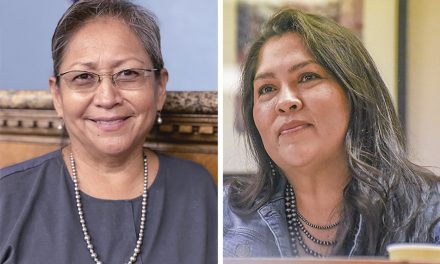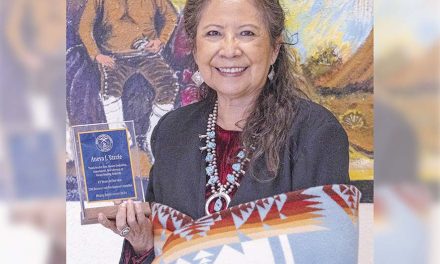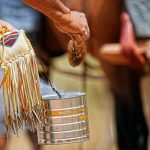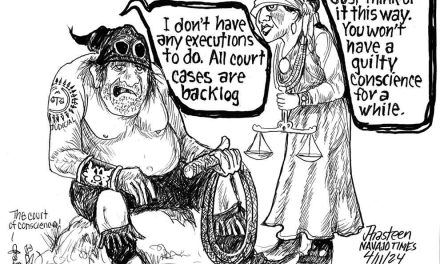
50 Years Ago: The origin of Red Rock Park
The U.S. Economic Research Associates, a subdivision of the U.S. Department of Commerce, issued a report supporting a proposal to build a national Indian memorial park as part of a major year-round attraction in Gallup.
This park would be used by the Gallup Inter-tribal Indian Association to promote Navajo, Hopi and Zuni arts and crafts, as well as Indian dancing.
The park would cost an estimated $2.5 million and could be built, said ERA, about two miles east of Gallup in the Navajo community of Churchrock.
At that time, the Ceremonial Association held its annual celebration each August on the north side of Gallup.
The association requested that the federal agency do the study because the group was told that the area the association was using was going to be part of the route of a federal highway through Gallup in the late 1960s or early 1970s.
To be safe, the report suggested that the park be up and running by the time the 1969 Ceremonial was held.
The cost was expected to be $2.5 million that would come from grants from the federal and state governments. The proposal called for a 10,000-seat arena that could be used for dances and rodeos, a historic trading post, a series of Indian villages (one each of the three area tribes), a visitors’ center, a museum, a hall of fame, a memorial tower, a research center, two restaurants and a number of Indian attractions.
All but the restaurants and trading post would be built by government grants and money from various fundraising activities. The restaurants and trading post would be financed privately.
The report envisioned a year-round attraction, with weekly events to bring people interested in Indian culture to Gallup throughout the year.
This would mark the beginning of a major push by the association to get the funds needed to build the park because the association’s board felt that if the new park wasn’t ready when the interstate highway was built, there would be no place to hold the event, and by that time, the event played an important part of life on the Navajo, Hopi and Zuni reservations.
More than a hundred Navajos were hired each year to perform Indian dances and hundreds more earned money selling their arts and crafts and in the rodeo competition.
Navajo Tribal Chairman Raymond Nakai agreed to write letters of support, hoping this would give his campaign for re-election a boost in the city.
The association would eventually get a grant and would build the park, now known as Red Rock Park, but by that time the costs had risen to $3.5 million so the idea had to be cut back drastically and things like the restaurants and the research center were eliminated.
The big news this week, however, was the discovery of a prairie dog town on the reservation northwest of Gallup where bubonic plague was found.
Bubonic plague had been a problem on the Navajo Reservation for several years with more than a dozen deaths blamed on it. Seven plague cases, none of them fatal, were diagnosed in the Gallup area in 1965.
Public health officials also announced that two other sites had been found but neither was as big as the one near Gallup. A total of 2,000 prairie dogs had been found with the plague at the site near Gallup.
Public Health Service officials said they were prepared to go into these prairie dog towns and kill any of the rodents that were found to have the fleas that spread the disease to humans.
Officials for the U.S. Fish and Wildlife Department said they spent six weeks in the fall of 1965 dusting and gassing prairie dogs in their burrows. The program had to discontinue the program when the weather turned cold and the prairie dogs went into hibernation.
As the eradication began, federal officials began having problems with packs of wild dogs that roamed many parts of the reservation and had been eating the prairie dogs, making it hard for health officials to get the samples they needed to make an accurate count of affected prairie dogs.
And finally, a federal jury in Prescott this week 50 years ago found four Navajos guilty of raping an 18-year-old woman who had come to the reservation as part of the VISTA program. They were to be sentenced on June 27.
The jury was out for only five hours.
The woman had decided the day before the rape to move into a hogan in Denehotso that did not have a lock or security.
After the rape, VISTA put in place a series of new restrictions for VISTA workers on the reservation about their living quarters, including requiring that supervisors approve any living quarters and banning volunteers from living by themselves.
To read the full article, pick up your copy of the Navajo Times at your nearest newsstand Thursday mornings!
Are you a digital subscriber? Read the most recent three weeks of stories by logging in to your online account.







 Highway 264,
Highway 264, I-40, WB @ Winslow
I-40, WB @ Winslow